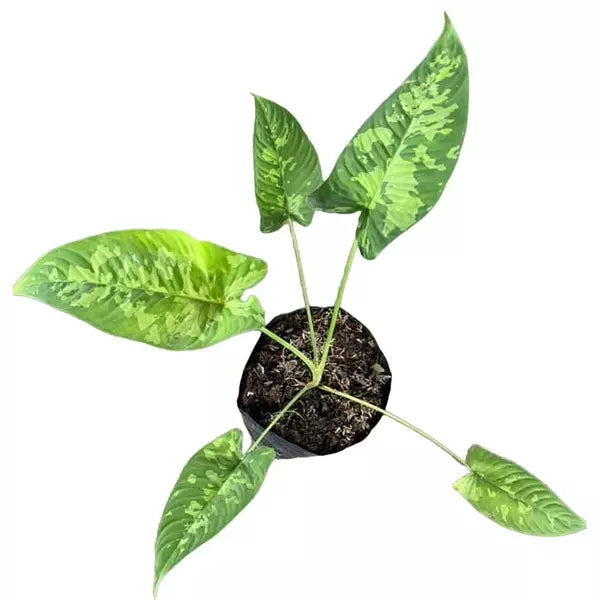
Schismatoglottis sp Calyptrata - Rare
Single Plant | Pot Included
Schismatoglottis sp Calyptrata, a captivating tropical plant native to the rainforests of Southeast Asia, requires specific care to thrive indoors.
Here's a guide to help you cultivate this beautiful Schismatoglottis sp. Calyptrata foliage:
Light
Bright, indirect light is ideal. Avoid direct sunlight, which can scorch its leaves.
It can tolerate lower light conditions, but growth may slow down. A spot near a window with filtered light or in partial shade is perfect.
Watering
Maintain evenly moist soil, but ensure it is well-draining to prevent root rot.
Water when the top 1-2 cm of the soil feels dry.
Avoid letting the plant sit in water.
Humidity
As a tropical plant, Schismatoglottis sp. Calyptrata thrives in high humidity, ideally above 60%.
Increase humidity by regularly misting the leaves, using a humidifier, or placing the pot on a pebble tray filled with water.
Temperature
The optimal temperature range is between 18°C and 26°C (64°F and 79°F).
Protect the plant from cold drafts and sudden temperature fluctuations.
Soil
Use a well-draining, organic-rich potting mix. A mixture of standard potting soil with perlite and a little sand or peat moss can provide the right balance of moisture retention and drainage.
Fertilizer
During the active growing season (spring and summer), fertilize every two weeks with a balanced liquid fertilizer.
Reduce or stop fertilization in the fall and winter when the plant's growth slows down.
Propagation
Schismatoglottis sp. Calyptrata can be easily propagated by division of the rhizomes (the underground stems). Simply separate the pups (new shoots) that grow at the base of the plant and pot them individually.
Pests
This plant is relatively resistant to pests. However, keep an eye out for common houseplant pests like spider mites, aphids, and scale insects.
If you notice any pests, address them promptly with natural methods like wiping the leaves with a damp cloth or using a mild insecticidal soap solution.
Toxicity
Schismatoglottis is generally considered non-toxic to humans and pets, but it's always best to keep houseplants out of reach of curious children and animals.
By providing these care conditions, your Schismatoglottis sp Calyptrata will flourish, showcasing its beautiful and unique foliage.

